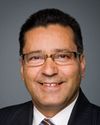Thank you, Mr. Chair.
Thank you, everybody, for being here today.
I have just a few questions. In your presentation on page 6, you talk about “the building blocks of integrated energy systems”. The second one is an “enabling platform of higher density, mixed use developments”.
I guess I'm going to follow Mr. Anderson's line of questioning. I've just now realized that my riding is mostly remote, I guess, since I don't have any communities of 10,000 people, but there are a number of sawmills, pulp mills, and such things that are interested in pursuing some of these community energy types of ventures. What kinds of projects are you working on? Are there any in these small communities of 500 or 1,000 people so they can take advantage of some of these types of projects?




